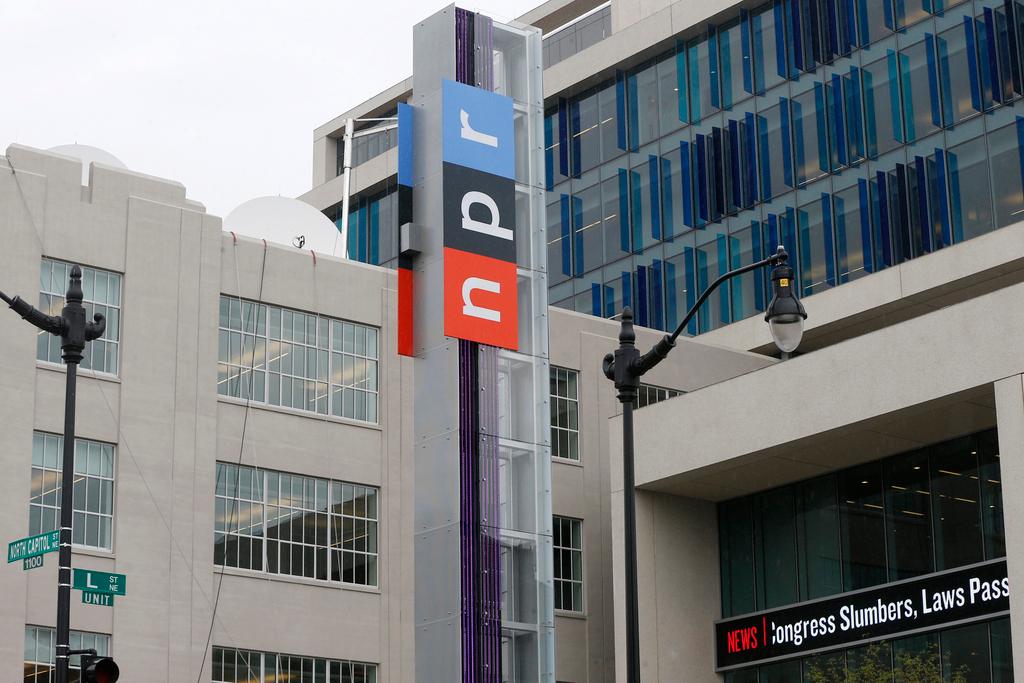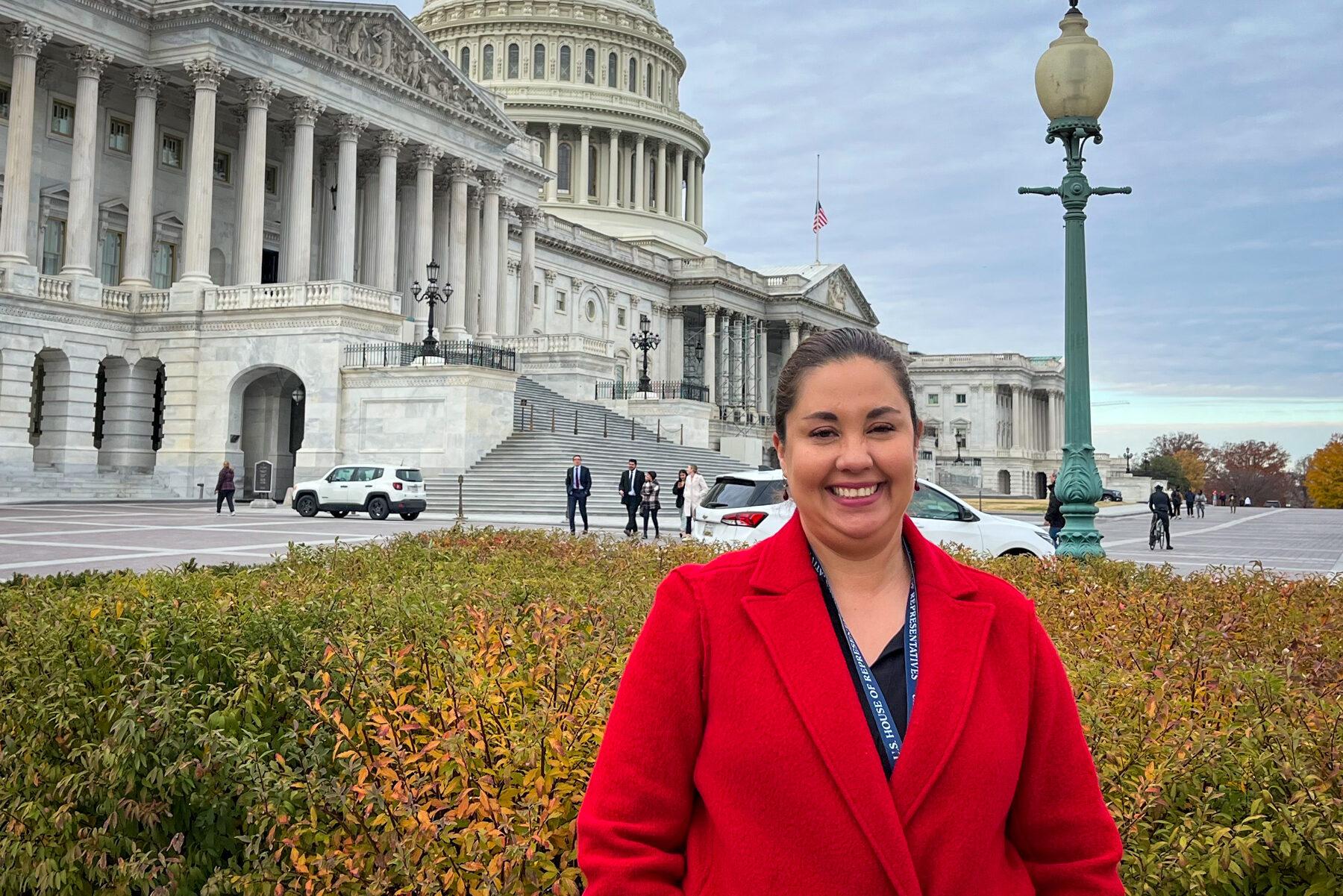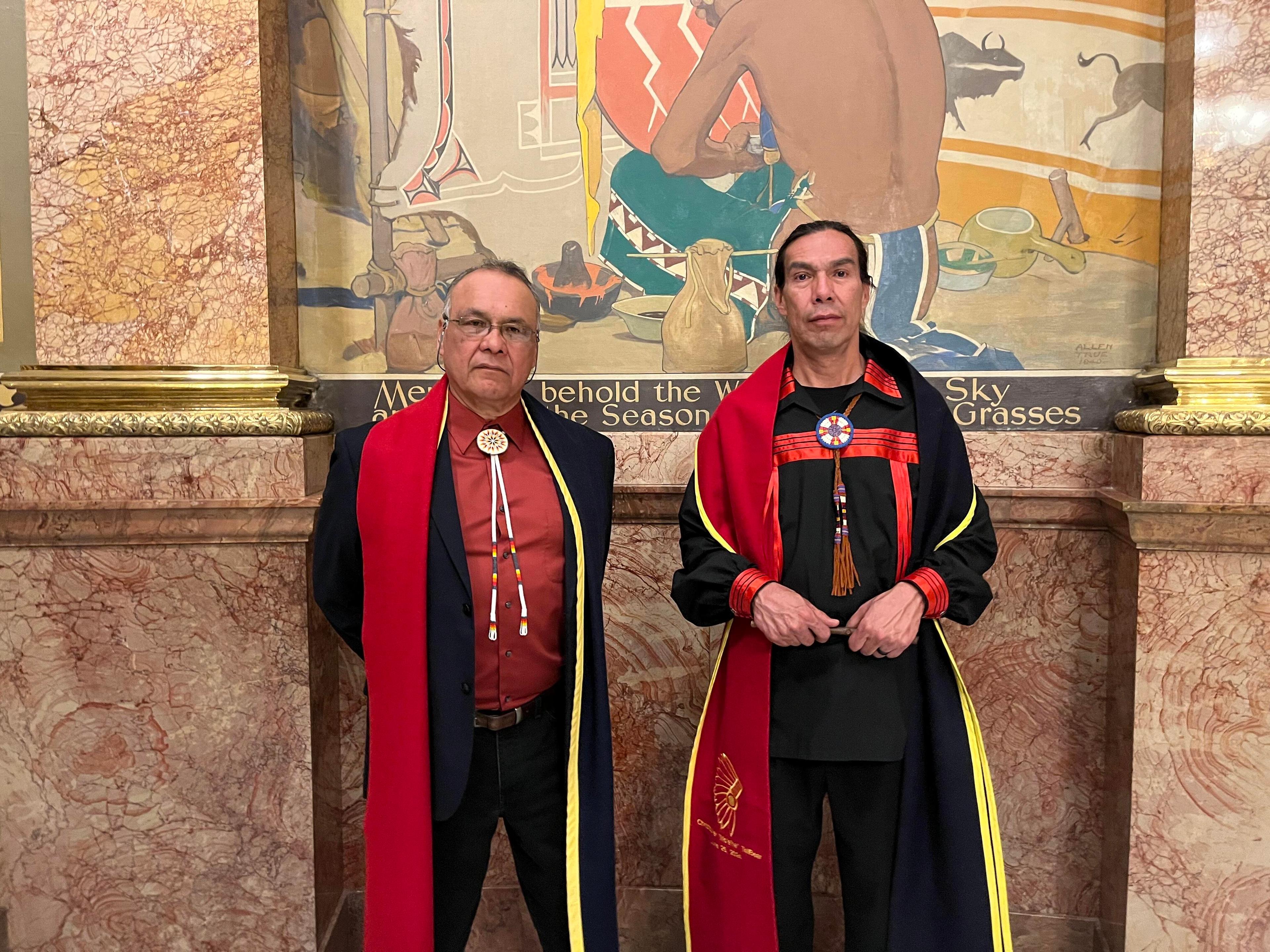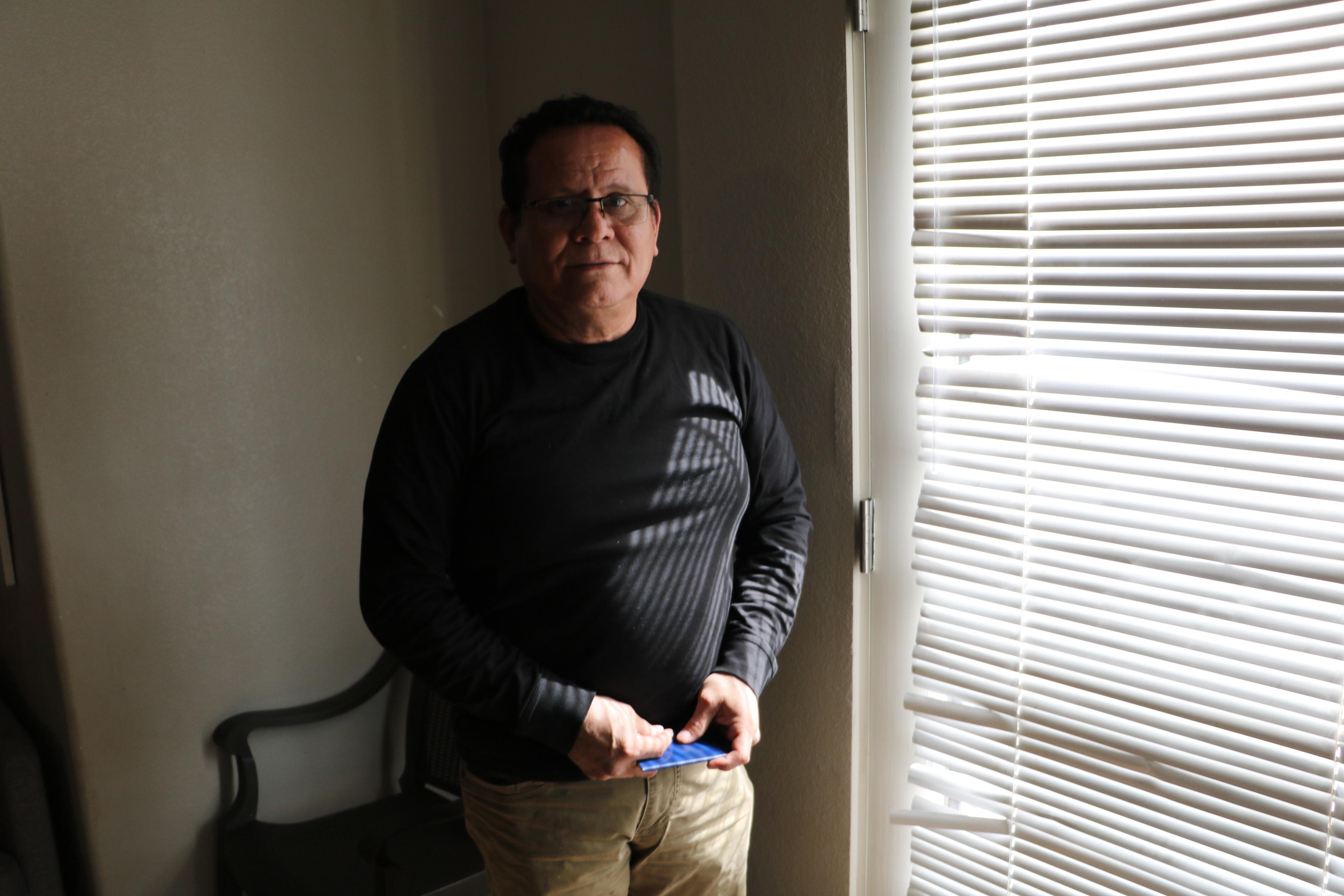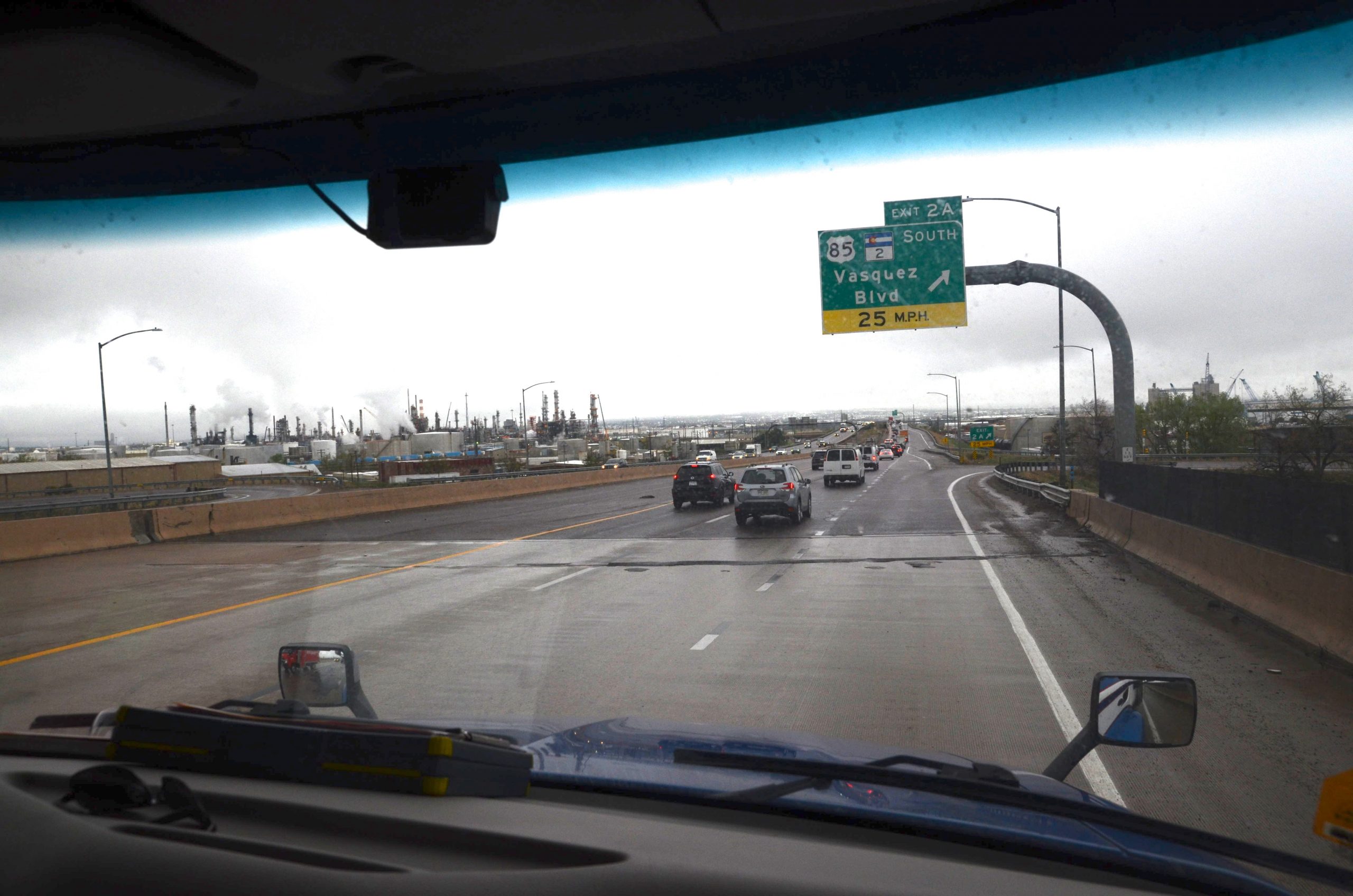
Jesus Torres can see a lot from his perch in the cab of a tanker truck.
Cars with blown tires on the side of the pothole-scarred roads. Overturned tankers on exit ramps curved too sharply for large modern trucks to handle. And more often than not, red tail lights snaking into the distance.
“They need to add more lanes to all the highways,” he said on a recent morning on Interstate 270 just after leaving the Phillips 66 terminal in Commerce City.
Far too often, Torres said, accidents on this highway through Colorado’s industrial center will cause long delays that are costly for his employer, Wyoming-based Dixon Bros.
“That means that it's going to take me longer to get to my station and deliver the fuel that my client needs,” Torres said.
Torres’ wish for wider roads is shared by business groups and some lawmakers and local government officials. And they may well see it granted, though only partially as the state works toward another major goal: reducing greenhouse gas emissions 90 percent by 2050.
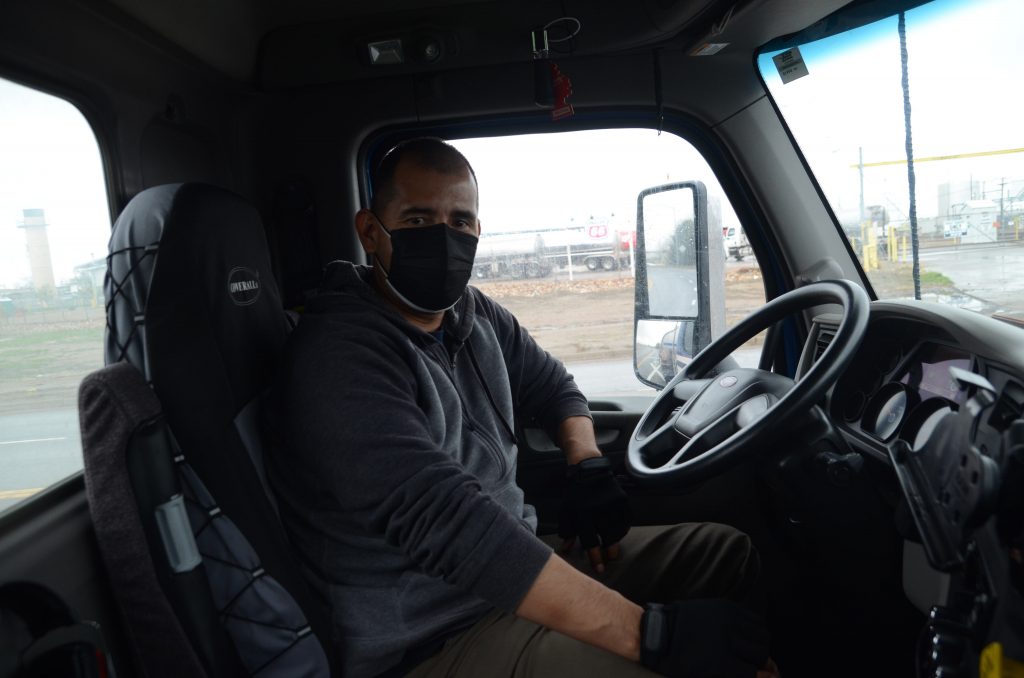
The Colorado Department of Transportation has plans to rebuild and expand Interstate 270 in the next 10 years. But department officials say they have shifted from expanding highways as quickly as money allows to a “fix it first” approach, mixed with expanding transit and pedestrian infrastructure.
CDOT says it has strategies, including more transit service and tolling, that will offset any possible increase in driving and its associated pollution. But the department will be working against decades of academic research — and a new, Colorado-specific analysis — that suggests that will be difficult to accomplish.
Whether the state succeeds largely comes down to whether it can build new lane miles and not see them filled too.
“I really think Colorado has the opportunity to be a leader in this space and to get it right,” said CDOT Executive Director Shoshana Lew.
Electric vehicles can cut emissions. But they’re not enough on their own.
The state’s climate roadmap says the state needs to reduce greenhouse gas emissions from the transportation sector by 12.5 million tons by 2030. A dramatic shift to electric vehicles and a handful of other policies could take care of about three-quarters of that, said Will Toor, executive director of the Colorado Energy Office.
That leaves about 3 million tons of emissions to be addressed by limiting the growth in the number of miles people drive to about 10 percent below 2030 projections, Toor said.
The pandemic gave the state a head start in that regard, reducing travel by about 10 percent through the summer and fall of 2020. Separate from the roadmap, CDOT has its own goal of reducing vehicle miles traveled from 2019 levels 1 percent per capita per year through 2023.
How the state plans to cut down on driving
The state currently is pursuing two strategies to reduce vehicle miles traveled.
The first, currently in the works at the Colorado Department of Public Health and Environment, would require large employers in the Denver metro and the northern Front Range to develop plans that reduce the number of workers who drive to work alone. Suggested strategies include incentivizing public transit use, carpooling and working from home.
The second could shape the type of transportation projects that are built. It would require the state to create emissions budgets that CDOT and metropolitan planning organizations like the Denver Regional Council of Governments would have to meet.
The rule’s efficacy depends on whether it is enforced in a meaningful way, said Cindy Copeland, an air and climate policy analyst at Boulder County that sits on a CDOT-convened greenhouse gas advisory group.
“We need to see a real change in the way that we do transportation planning,” Copeland said.
The rule is still under development and the state Air Quality Control Commission will likely take it up later this summer.
Toor doesn’t expect the rule to affect projects under construction or deep in the planning phase, which can last for years. CDOT is currently working on a $5 billion, 10-year plan finalized in 2020, the product of months of work by the agency to collect feedback from across the state.
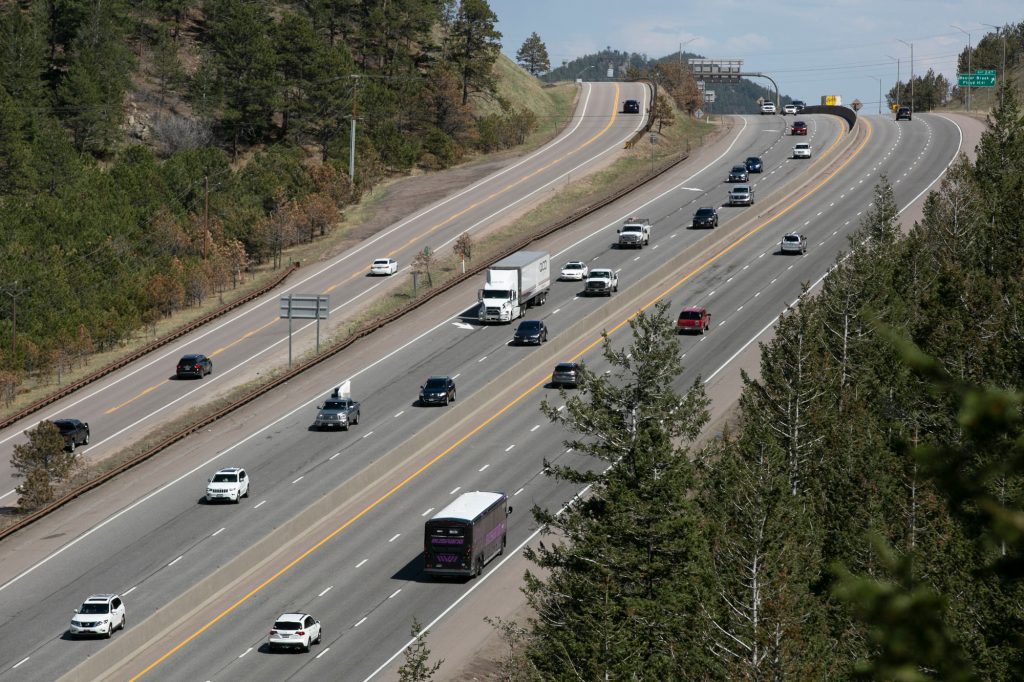
That plan represents a shift for CDOT, said Toor, who, in a previous life as a county commissioner and mayor of Boulder from the 1990s through the 2010s, fought with the agency’s then-leaders over planned highway expansions.
The few highway expansions in CDOT’s current plan take a “far more thoughtful approach” than previous incarnations, Toor said. Overall, he said, the plan strikes a more environmentally friendly balance between maintenance and expansion.
For example: The agency is no longer pursuing an additional lane on Interstate 25 between 84th and 104th in the Denver metro, a third bore of I-70’s Eisenhower-Johnson Tunnel or the long-desired new “Ports to Plains” interstate on the Eastern Plains, according to CDOT spokesman Matt Inzeo.
So is CDOT’s 10-year plan compatible with the state’s climate goals? “I think that the answer is yes,” Toor said.
Sen. Faith Winter, D-Westminster, one of the most outspoken advocates for climate action in the legislature, also said she’s happy with the “significant transition” at CDOT in recent years.
“CDOT is moving toward a future where it’s not just lane miles and it’s not just new roads,” she said.
Winter’s transportation funding bill currently working its way through the legislature includes a provision that would require governments to do an “enhanced level” of planning, analysis, community engagement, and monitoring for road expansion projects. While Republicans and business groups worry that could slow construction work, CDOT leaders say it won’t and will only enshrine practices the department already uses.
CDOT says its 10-year plan and the road expansions complement the climate roadmap. Environmental groups disagree
If all the projects in the 10-year plan were completed, including the expansion of I-270 and a rebuild and expansion of Interstate 70 at Floyd Hill, the number of vehicle miles traveled would increase by only a tenth of a percent, according to CDOT’s modeling, said the agency’s Erik Sabina.
“There’s no such thing as a perfect model,” Sabina said. “But we feel that this model has a very strong foundation, both theoretically and in data.”
CDOT’s prediction contradicts a large body of academic research that suggests expanding highways in urban areas typically results in more drivers using those new lanes.
CDOT officials say the expansions are different because it’s planning to operate or enable better transit service on newly expanded roads and expansion projects are targeted at bottlenecks, not entire corridors. New lanes will likely be tolled, or “managed,” lanes, which CDOT says won’t be used as heavily as standard lanes.
CDOT’s model shows those factors combined will tamp down traffic and air pollution, Sabina said.
At least one environmental think-tank believes CDOT has overstated their ability to hold vehicle miles traveled in check. A team at RMI, formerly Rocky Mountain Institute, recently adapted a University of California Davis-built tool to calculate an increase of 1 billion to 1.5 billion additional vehicle miles traveled by 2030 — a 2 percent increase over current levels.
"To put that in even more concrete terms, this is the equivalent of about 70,000 more cars on roads every year,” Lainie Rowland, an RMI associate, said at a press conference in April.
The institute estimated that direct and indirect emissions would rise by between 8 million and 15 million metric tons of carbon dioxide-equivalent cumulatively through 2050.
The state and local governments need to stop expanding roads in ways that encourage more driving and instead greatly increase transit service, bicycle and pedestrian infrastructure, said Danny Katz, executive director of the Colorado Public Interest Research Group.
“It’s really time to put our pollution reduction goals first and foremost,” said Katz, who partnered with RMI.

There are significant differences between RMI’s calculation and CDOT’s analysis of its 10-year plan. RMI’s analysis also included expansion projects underway like Central 70, for example, where CDOT’s does not.
CDOT immediately took issue with RMI’s analysis, saying in a letter that it appeared to be a “generic calculator tool,” that did not account for factors like transit service and geographic nuances. RMI countered, saying that the “critical input” is the lane expansion itself.
“What we have done is provide a useful approximation, based on the most critical inputs,” RMI wrote.
Shams Tanvir, an assistant professor in California Polytechnic State University’s civil and environmental engineering department, said “it’s possible” the state could meet its goal of slowing the growth in driving while also expanding highways. Though examples from elsewhere, he cautioned, like California, suggest it would be very difficult.
“It's very hard to move people's behavior, to get them to use a different mode,” he said.
CDOT is in a tough position
Colorado’s transportation agency is under pressure from some to build more and others to build less — and there’s plenty that’s outside the department’s purview. Land use decisions that could promote density and less driving, for example, are under the domain of local governments. Tanvir said CDOT will need help from those local governments and major transit providers to succeed.
“If all three can work together, that can help us to solve some of these basic issues that we are now grappling with along the lines of climate change targets and congestion,” he said.
CDOT Executive Director Shoshana Lew said the agency has taken a strategy of promoting and providing different modes of transportation — more carrot than stick.
“You don’t want to get into the space of telling people when they can drive,” Lew said. “That’s not what we see CDOT’s role and the government’s role to be.”
CDOT has remained committed to what it can control, the projects on its 10-year to-do list, despite some pressure to re-examine them. At a March meeting of CDOT’s greenhouse gas advisory group, Denver Regional Council of Governments Transportation Director Ron Papsdorf suggested the highway projects in the 10-year plan needed to be balanced with smaller projects “important for the regions to address the greenhouse gas emissions reductions.”
Lew replied, asking “that we not talk about re-litigating the 10-year plan in this conversation.”
Sometimes projects need to be built, Lew told the group. And saying that highway expansion projects are going to automatically lead to increased emissions, “is not quite an accurate representation.”
“This sounds like a more sensitive topic than I realized,” replied Louisville Mayor Ashley Stolzmann, who is also in the advisory group. “Something maybe we should take offline.”

